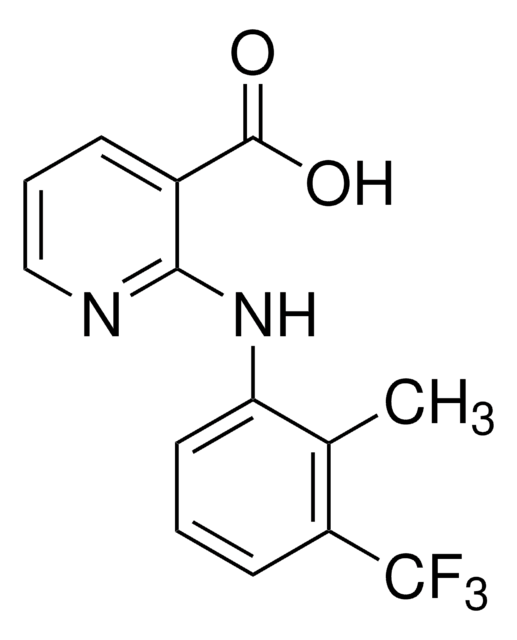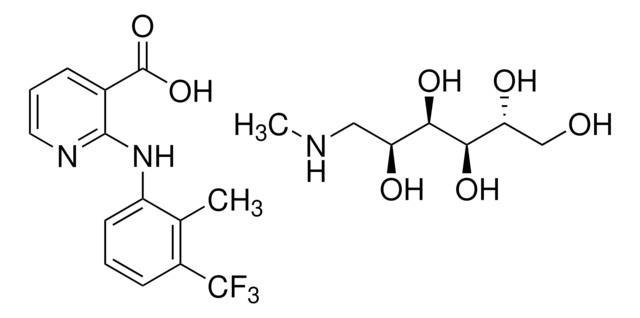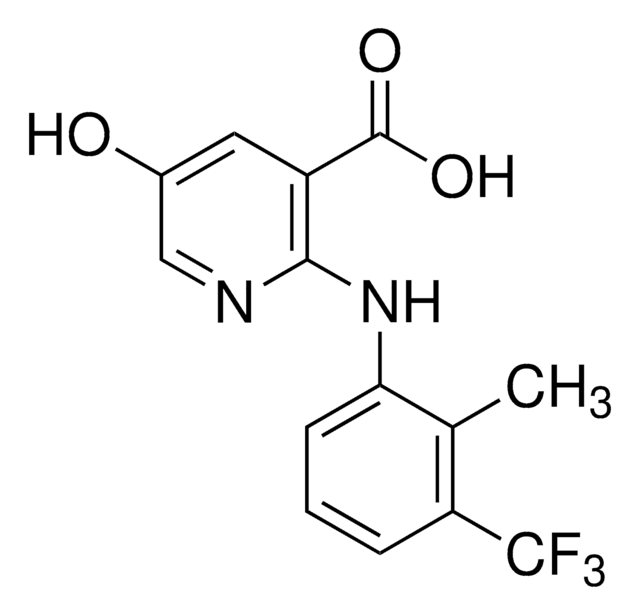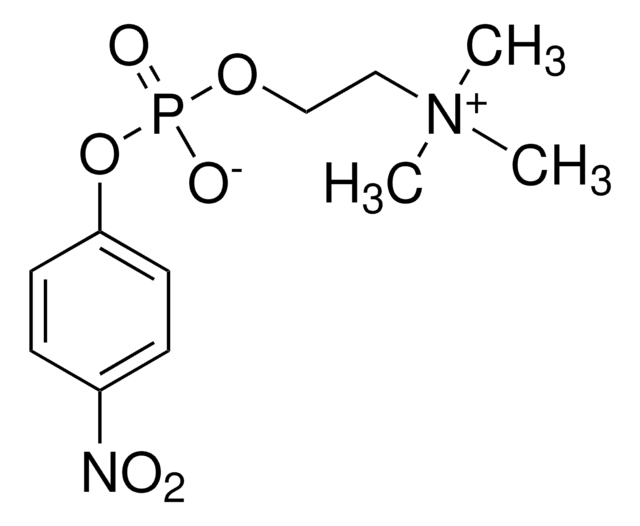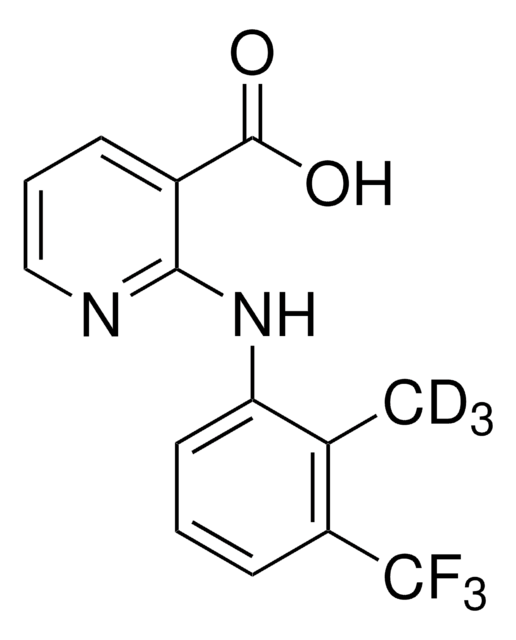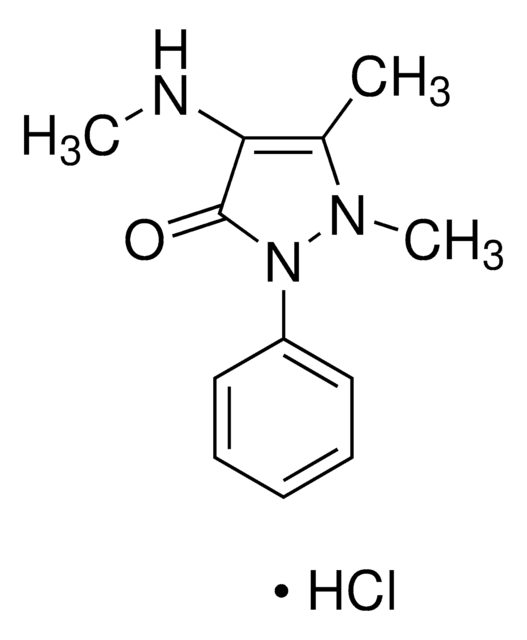Wichtige Dokumente
F0429
Flunixinmeglumin
≥98% (HPLC)
Synonym(e):
2-[[2-Methyl-3-(trifluormethyl)-phenyl]-amino]-3-pyridincarbonsäure Megluminsalz, Banamine
About This Item
Empfohlene Produkte
Qualitätsniveau
Assay
≥98% (HPLC)
Form
powder
Farbe
white to beige
mp (Schmelzpunkt)
136.6-137.4 °C
Löslichkeit
H2O: freely soluble
Lagertemp.
room temp
SMILES String
CNC[C@H](O)[C@@H](O)[C@H](O)[C@H](O)CO.Cc1c(Nc2ncccc2C(O)=O)cccc1C(F)(F)F
InChI
1S/C14H11F3N2O2.C7H17NO5/c1-8-10(14(15,16)17)5-2-6-11(8)19-12-9(13(20)21)4-3-7-18-12;1-8-2-4(10)6(12)7(13)5(11)3-9/h2-7H,1H3,(H,18,19)(H,20,21);4-13H,2-3H2,1H3/t;4-,5+,6+,7+/m.0/s1
InChIKey
MGCCHNLNRBULBU-WZTVWXICSA-N
Suchen Sie nach ähnlichen Produkten? Aufrufen Leitfaden zum Produktvergleich
Anwendung
Biochem./physiol. Wirkung
Signalwort
Warning
H-Sätze
Gefahreneinstufungen
Eye Irrit. 2 - Skin Irrit. 2 - STOT SE 3
Zielorgane
Respiratory system
Lagerklassenschlüssel
11 - Combustible Solids
WGK
WGK 3
Persönliche Schutzausrüstung
dust mask type N95 (US), Eyeshields, Gloves
Hier finden Sie alle aktuellen Versionen:
Besitzen Sie dieses Produkt bereits?
In der Dokumentenbibliothek finden Sie die Dokumentation zu den Produkten, die Sie kürzlich erworben haben.
Kunden haben sich ebenfalls angesehen
Unser Team von Wissenschaftlern verfügt über Erfahrung in allen Forschungsbereichen einschließlich Life Science, Materialwissenschaften, chemischer Synthese, Chromatographie, Analytik und vielen mehr..
Setzen Sie sich mit dem technischen Dienst in Verbindung.